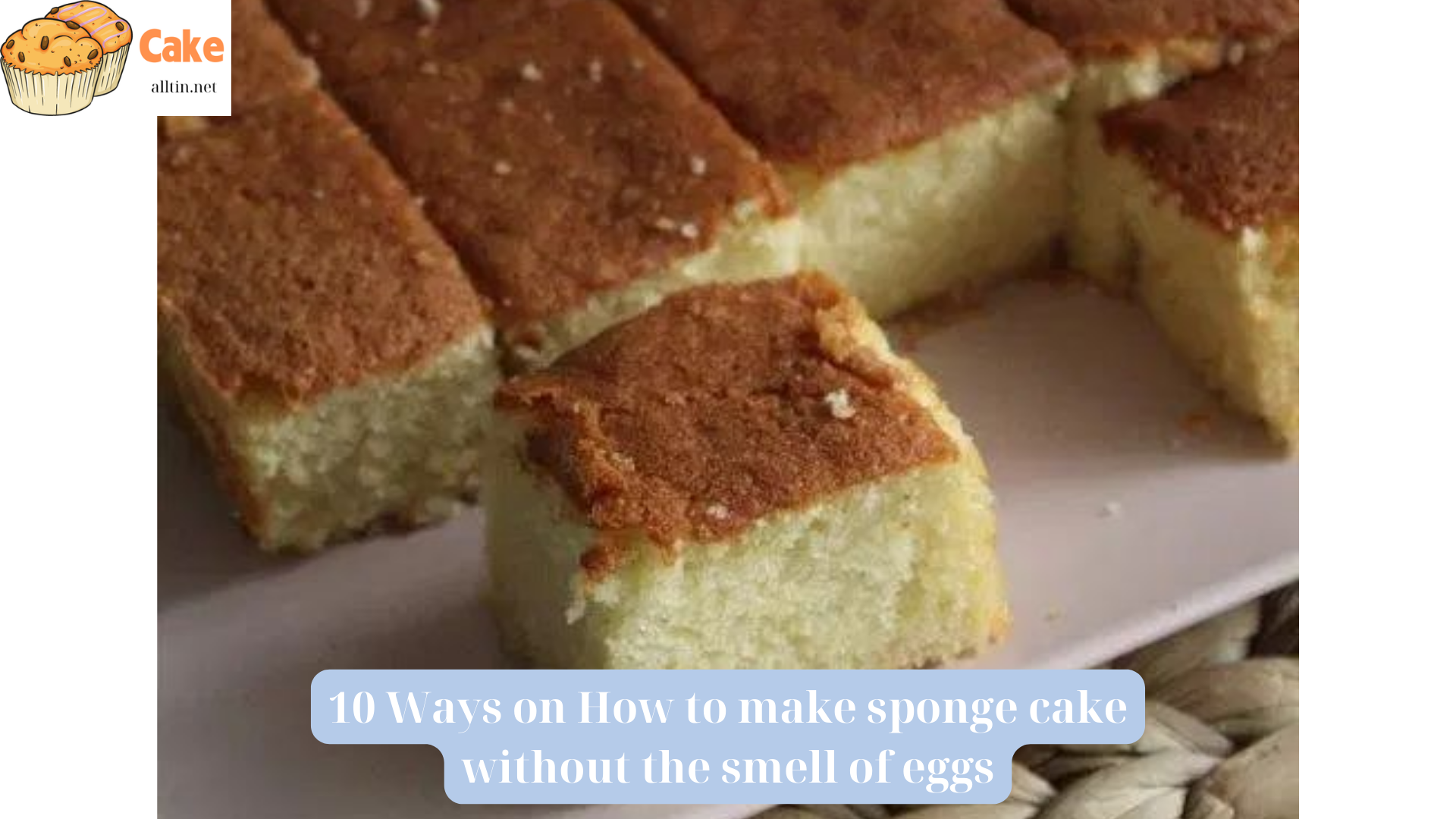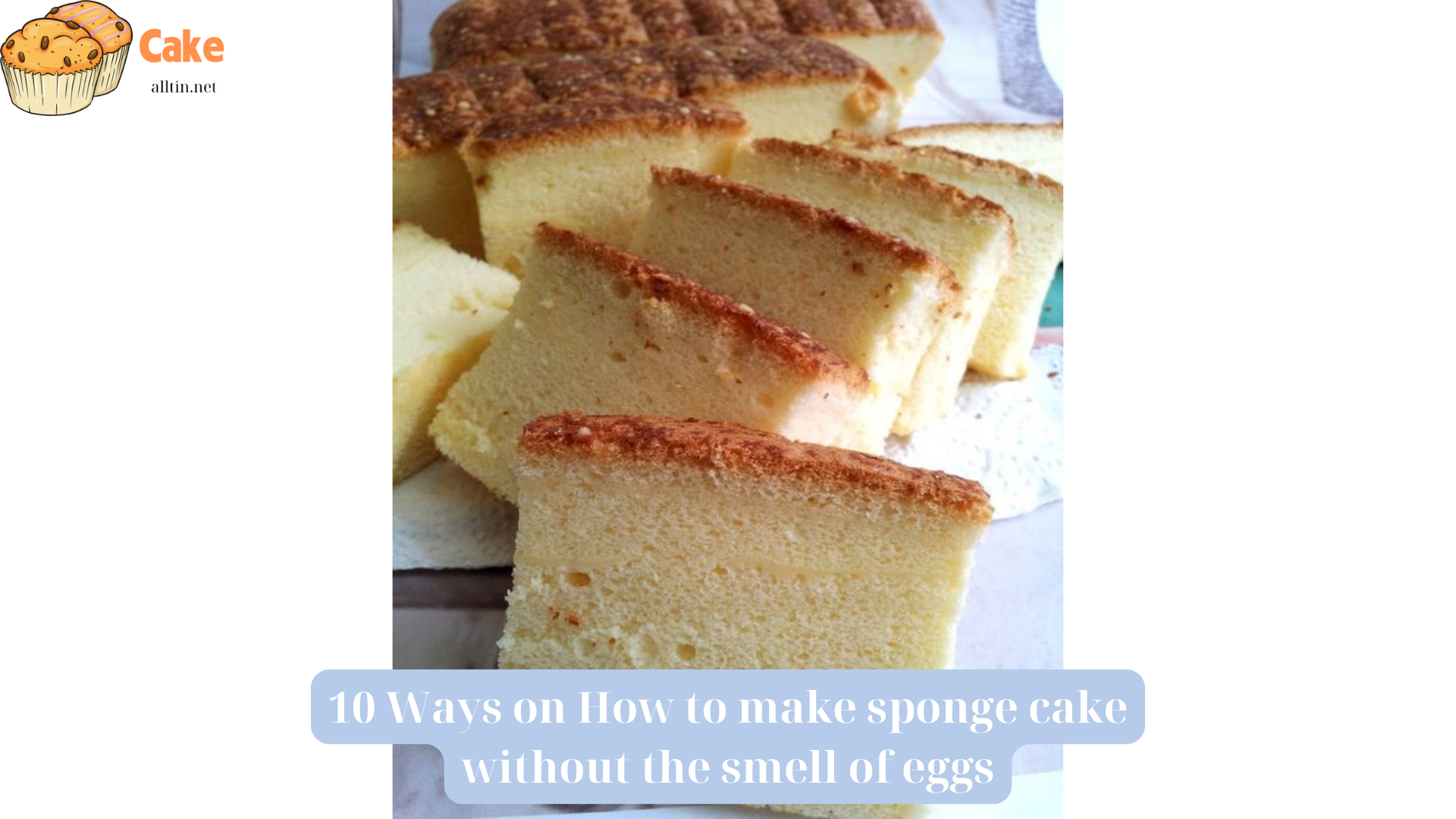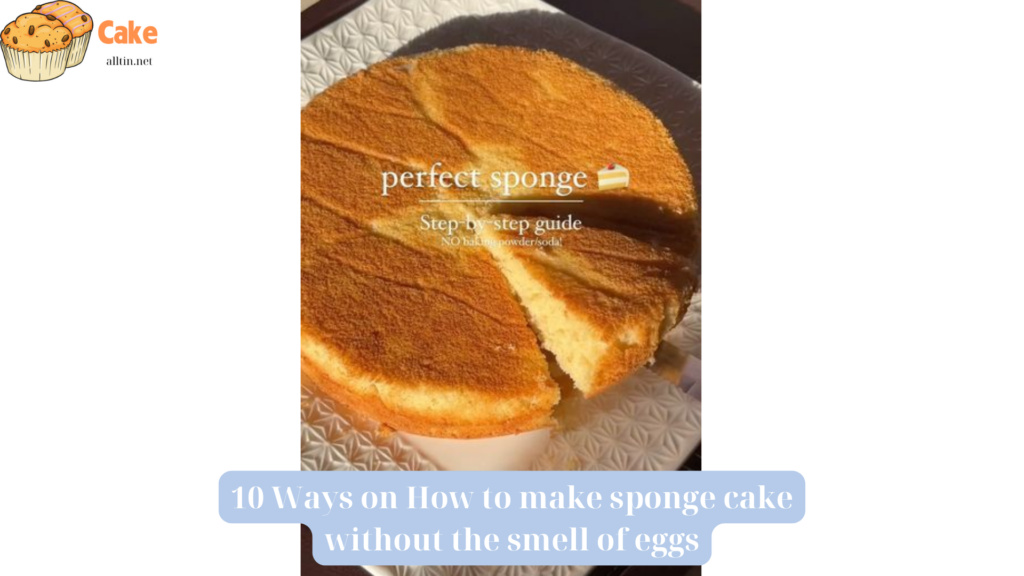Sponge cake is a beloved dessert enjoyed around the world, known for its light, airy texture and delicate flavor. However, for some, the distinct smell of eggs can be off-putting, deterring them from indulging in this classic treat. If you fall into this category, fear not – there are several methods on How to make sponge cake without the smell of eggs you can employ to create a delicious sponge cake without the eggy aroma.
Table of Contents
Toggle10 Ways on How to make sponge cake without the smell of eggs

In this comprehensive article, Alltin will explore 10 effective techniques of How to make sponge cake without the smell of eggs to help you make a sponge cake that’s free from the tell-tale smell of eggs. Whether you have dietary restrictions, personal preferences, or simply want to experiment with new baking approaches, these tips will guide you through the process of crafting a sponge cake that’s both visually appealing and deliciously egg-free.
- Utilize Aquafaba: Aquafaba, the liquid leftover from cooking chickpeas or other legumes, can be a game-changer when it comes to eggless baking. This magical liquid can be whipped into a meringue-like consistency, allowing you to achieve the same lofty, airy texture as traditional sponge cake. Simply drain and reserve the liquid from a can of chickpeas, then whip it until it forms stiff peaks. Fold the aquafaba meringue into your sponge cake batter, and you’ll be rewarded with a perfectly risen, egg-free cake.
- Embrace Silken Tofu: Silken tofu is a versatile ingredient that can seamlessly replace eggs in sponge cake recipes. Blend the tofu until it’s smooth and creamy, then use it to substitute the eggs in your recipe. The tofu will provide structure and moisture, while the lack of egg flavor will ensure your sponge cake remains free of any eggy notes.
- Experiment with Flax or Chia Seeds: Ground flax seeds or chia seeds can be used to create a “vegan egg” that can be incorporated into your sponge cake batter. Simply mix one tablespoon of ground flax or chia seeds with three tablespoons of water, and let the mixture sit for a few minutes until it develops a gelatinous consistency. This egg substitute will help bind your ingredients and contribute to the overall structure of the cake.
- Incorporate Baking Soda and Vinegar: By combining baking soda and vinegar, you can create a natural leavening agent that can replace the role of eggs in sponge cake. The chemical reaction between the two ingredients will produce carbon dioxide bubbles, which will help your cake rise and achieve that light, airy texture. Be sure to use the right ratios and timing to ensure the reaction is properly timed with your baking process.

- Utilize Coconut Flour or Almond Flour: Switching out traditional all-purpose flour for coconut flour or almond flour can also help you create an egg-free sponge cake. These alternative flours have a finer, more delicate texture that can mimic the lightness of an egg-based sponge cake. Experiment with the flour-to-liquid ratio to achieve the perfect consistency.
- Embrace Applesauce or Mashed Banana: Applesauce and mashed banana can be used as egg substitutes in sponge cake recipes. These natural ingredients will add moisture and structure to your batter, without the characteristic egg flavor. Start with a 1:1 ratio of applesauce or mashed banana to replace each egg called for in the recipe.
- Incorporate Xanthan Gum or Psyllium Husk: These binding agents can help create the structure and texture you’d expect from an egg-based sponge cake. Xanthan gum and psyllium husk will thicken your batter and contribute to the overall rise and crumb of the cake. Be sure to follow the recommended amounts on the package, as a little of these ingredients goes a long way.
- Use Milk or Non-Dairy Milk Alternatives: Replacing the eggs in a sponge cake recipe with milk or non-dairy milk alternatives, such as almond milk, soy milk, or oat milk, can help achieve a similar texture and moisture level. The proteins and fats in these liquids will help bind the ingredients together and create a tender, moist crumb.
- Experiment with Whipped Aquafaba and Milk Powder: For an extra-airy sponge cake, try combining whipped aquafaba (the liquid from canned chickpeas) with milk powder. The aquafaba will provide the necessary structure and rise, while the milk powder will contribute to the overall flavor and texture, without the presence of eggs.
- Embrace Egg Replacer: If you’re looking for a commercial product that can simplify the egg-free sponge cake process, consider using an egg replacer. These specialized baking mixes are designed to mimic the properties of eggs, allowing you to create a light, fluffy sponge cake without the eggy aroma.
Remember, when baking an egg-free sponge cake, it’s essential to adjust the liquid-to-dry ingredient ratio and baking times to account for the differences in the substitutions you’re using. Each technique may require a slightly different approach, so be prepared to experiment and fine-tune your recipe to achieve the perfect results.
Conclution

Embrace the diversity of egg-free baking and enjoy the satisfaction of crafting a delicious sponge cake that caters to your preferences and dietary needs. With these 10 techniques how to make sponge cake without the smell of eggs at your fingertips, you’ll be well on your way to creating a sponge cake that’s as light, airy, and flavorful as its egg-based counterpart, but without the lingering egg scent.

